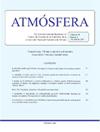COVID-19引发的封锁如何影响印度德里- ncr地区的空气质量?
IF 1
4区 地球科学
Q4 METEOROLOGY & ATMOSPHERIC SCIENCES
引用次数: 0
摘要
德里及其周边国家首都地区(NCR)的大气(图1)由于繁忙的交通和工业排放释放的有害空气污染物,以及燃烧残留物(住宅,商业和农业)和建筑和采矿活动产生的粉尘颗粒而严重恶化。每年,全世界约有500万人因空气污染而过早死亡,仅印度就有60万人,德里NCR就有2.5万人,到2050年这一数字可能会增加到五倍(世卫组织,2018年)。本文章由计算机程序翻译,如有差异,请以英文原文为准。
How COVID-19 induced lockdown impacts air quality in Delhi-NCR region of India?
The atmosphere in Delhi and its surrounding National Capital Region (NCR) (Figure 1) is highly deteriorated due to hazardous air pollutants released by heavy traffic and industrial emissions, as well as burning of residues (residential, commercial & agricultural) and dust particles from construction & mining activities. Annually, ~ 5 million people worldwide, 0.6 million in India and 25 thousand in Delhi NCR alone, die prematurely due to air pollution, and this amount may increase to five times by 2050 (WHO, 2018).
求助全文
通过发布文献求助,成功后即可免费获取论文全文。
去求助
来源期刊

Atmosfera
地学-气象与大气科学
CiteScore
2.20
自引率
0.00%
发文量
46
审稿时长
6 months
期刊介绍:
ATMÓSFERA seeks contributions on theoretical, basic, empirical and applied research in all the areas of atmospheric sciences, with emphasis on meteorology, climatology, aeronomy, physics, chemistry, and aerobiology. Interdisciplinary contributions are also accepted; especially those related with oceanography, hydrology, climate variability and change, ecology, forestry, glaciology, agriculture, environmental pollution, and other topics related to economy and society as they are affected by atmospheric hazards.
 求助内容:
求助内容: 应助结果提醒方式:
应助结果提醒方式:


